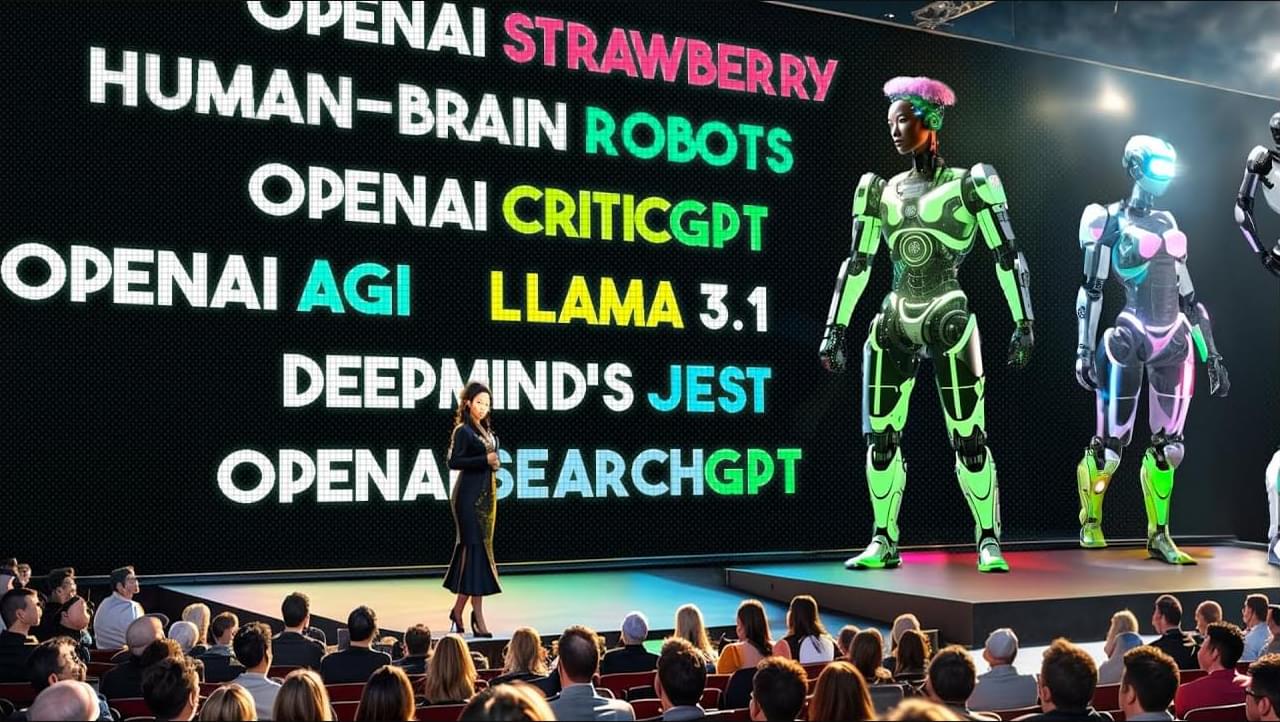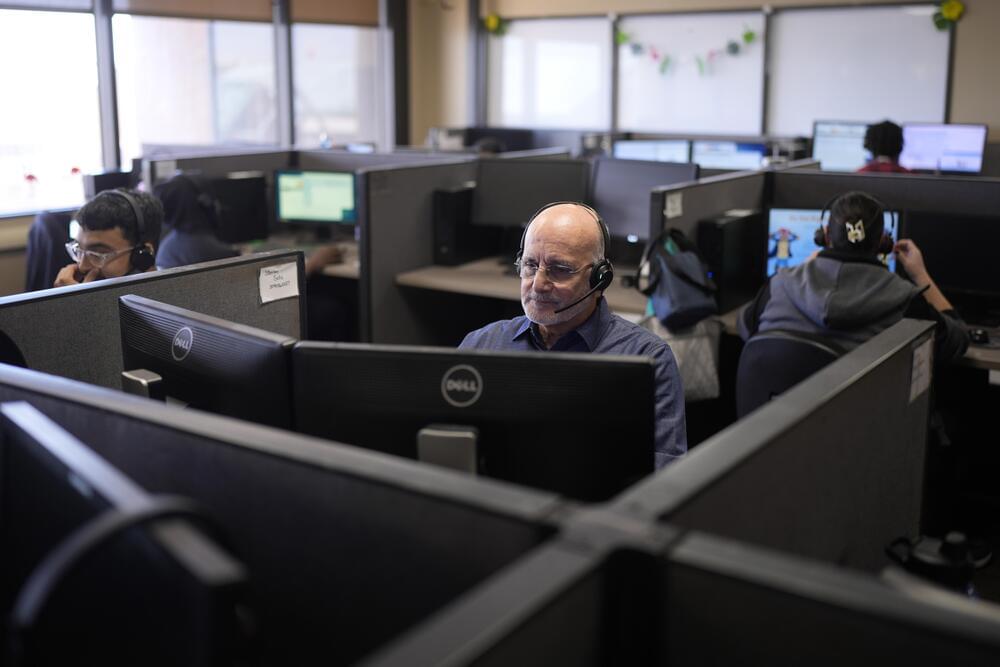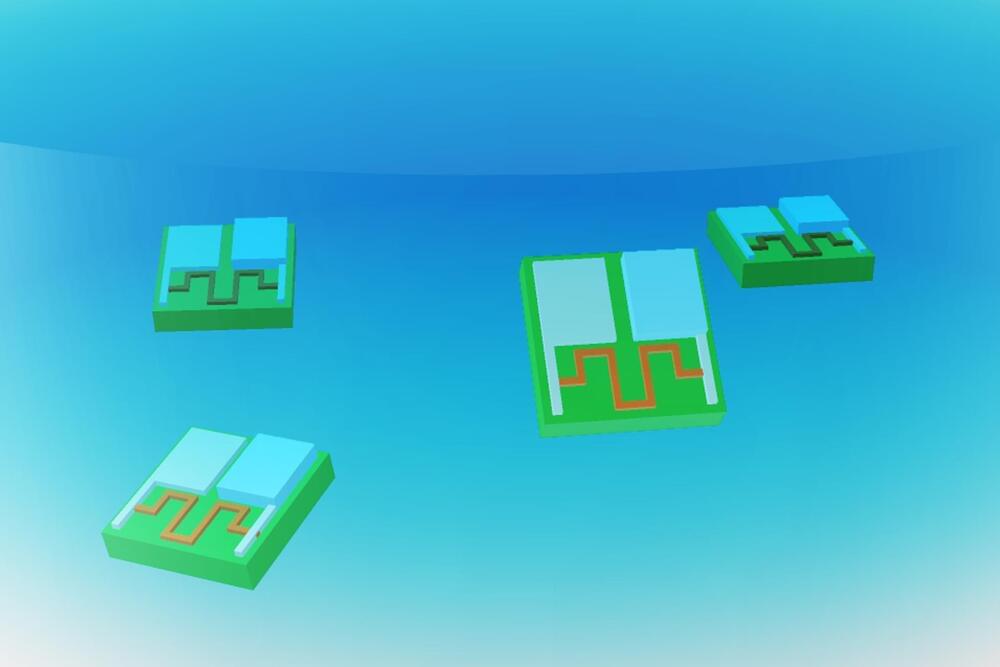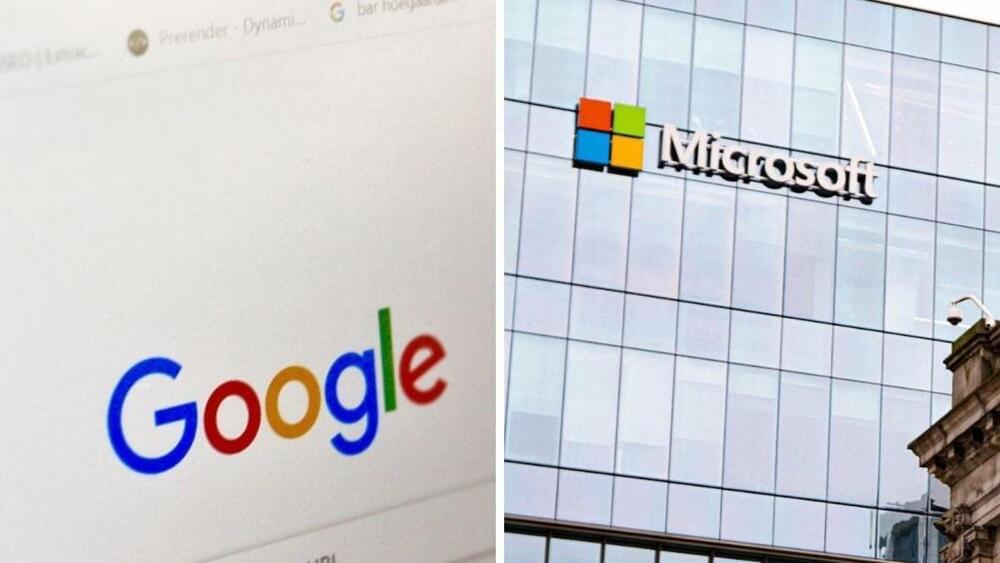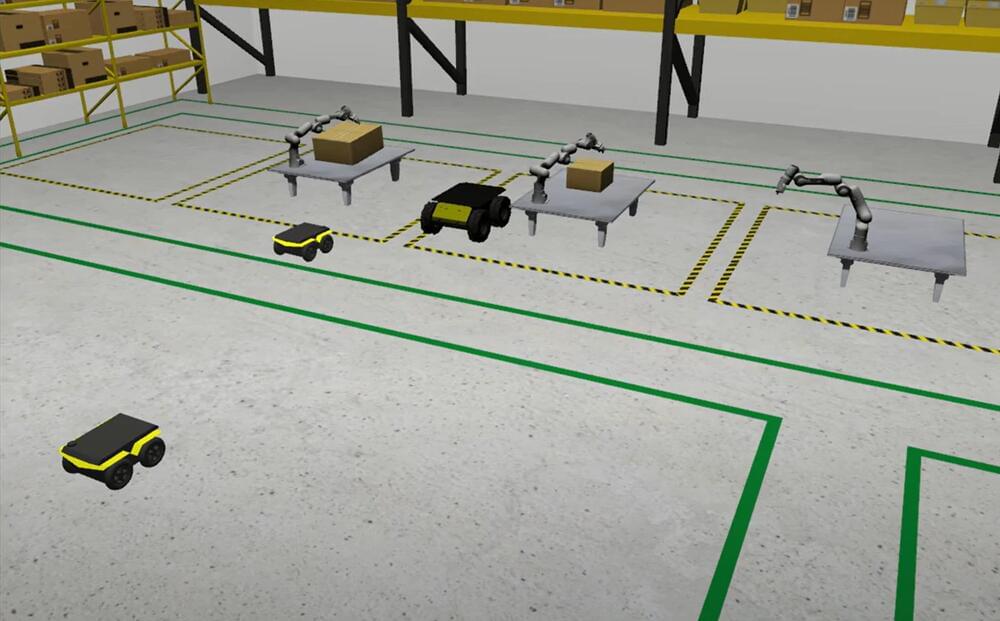BillionToOne, which is headquartered in California, is set to build a new facility in Austin’s EastVillage.
Category: employment – Page 7
The AI scene is electrified with groundbreaking advancements this month, keeping us all at the edge of our seats. A mind-blowing AI robot with human-like intelligence has the world in shock. Google DeepMind’s JEST AI learns at an astonishing 13x faster pace. OpenAI’s SearchGPT and CriticGPT, the force behind ChatGPT’s prowess, are disrupting industries. STRAWBERRY, their most powerful AI yet, takes center stage. GPT4ALL 3.0 is the AI sensation causing a frenzy, while OpenAI’s AI Health Coach promises personalized wellness solutions. Llama 3.1 emerges as a contender, and NeMo AI boasts a massive 128k context capacity, running locally and free. Microsoft’s new AI Search could redefine how we navigate information, while OpenAI’s latest unnamed model has the tech world buzzing with anticipation.
Become a Member of the channel and Supporter of AI Revolution → / @airevolutionx.
#ai #ainews.
Timestamps:
00:01:02 AI Robot with Human Brain.
00:09:08 Google DeepMind’s JEST AI Learns 13x Faster.
00:18:04 OpenAI’s New SearchGPT
00:26:33 OpenAI’s New AI CriticGPT
00:37:05 STRAWBERRY — OpenAI’s MOST POWERFULL AI Ever!
00:45:40 AGI Levels by OpenAI
00:47:11 Grok 2
00:55:01 GPT4ALL 3.0
01:02:52 Humanoid Robots Now Taking Human Jobs.
01:12:04 OpenAI Launching the AI Health Coach.
01:20:17 New Llama 3.1 is The Most Powerful AI Model Ever!
01:29:26 This AI Reads Your Mind And Shows You Images!
01:37:15 New AI DESTROYS GPT-4o.
01:45:19 GPT-4o Mini.
01:54:09 NeMo AI
02:02:28 Microsoft New AI Search.
02:05:10 New Mistral Large 2 Model
WASHINGTON (AP) — Imagine a customer-service center that speaks your language, no matter what it is.
Alorica, a company in Irvine, California, that runs customer-service centers around the world, has introduced an artificial intelligence translation tool that lets its representatives talk with customers who speak 200 different languages and 75 dialects.
So an Alorica representative who speaks, say, only Spanish can field a complaint about a balky printer or an incorrect bank statement from a Cantonese speaker in Hong Kong. Alorica wouldn’t need to hire a rep who speaks Cantonese.
Scientists at Northwestern University say they’ve invented a goo — yes, a goo — that could open the door to regenerating human knee cartilage, a finding that could eventually lead to new clinical ways to rebuild knee joints and avoid invasive and expensive knee replacement surgeries.
Cartilage is the connective tissue that wraps around joints and bones, working to absorb shock, aid mobility, and protect against painful bone-on-bone friction. These are all tough — and important! — jobs, and yet cartilage doesn’t naturally regenerate on its own. As a result, those with worn-down or damaged cartilage often wind up turning to knee replacement surgery. While effective, that road can be expensive and generally requires a lengthy recovery period.
That’s where the goo might come in.
Engineers have designed a tiny battery, smaller than a grain of sand, to power microscopic robots for jobs such as drug delivery or locating leaks in gas pipelines.
A tiny battery designed by MIT engineers could enable the deployment of cell-sized, autonomous robots for drug delivery within in the human body, as well as other applications such as locating leaks in gas pipelines.
The new battery, which is 0.1 millimeters long and 0.002 millimeters thick — roughly the thickness of a human hair — can capture oxygen from air and use it to oxidize zinc, creating a current with a potential of up to 1 volt. That is enough to power a small circuit, sensor, or actuator, the researchers showed.
“We think this is going to be very enabling for robotics,” says Michael Strano, the Carbon P. Dubbs Professor of Chemical Engineering at MIT and the senior author of the study. “We’re building robotic functions onto the battery and starting to put these components together into devices.”
As of August 2024, the global employment landscape is facing significant turbulence, with more than 130,000 employees laid off across nearly 400 companies. Tech giants like Google, IBM, Apple, Amazon, SAP, Meta, and Microsoft have contributed to these staggering figures, indicating a major recalibration within the job market.
According to industry experts, this trend is accelerating as the integration of artificial intelligence (AI) and automation prompts companies to streamline operations. Amidst this upheaval, Ramesh Alluri Reddy, CEO of TeamLease Degree Apprenticeship, sheds light on layoffs, workforce reshaping, and the potential for recovery.
New research from the University of Massachusetts Amherst shows that programming robots to create their own teams and voluntarily wait for their teammates results in faster task completion, with the potential to improve manufacturing, agriculture and warehouse automation. The study is published in 2024 IEEE International Conference on Robotics and Automation (ICRA).
This research was recognized as a finalist for Best Paper Award on Multi-Robot Systems at the IEEE International Conference on Robotics and Automation 2024.
“There’s a long history of debate on whether we want to build a single, powerful humanoid robot that can do all the jobs, or we have a team of robots that can collaborate,” says one of the study authors, Hao Zhang, associate professor at the UMass Amherst Manning College of Information and Computer Sciences and director of the Human-Centered Robotics Lab.
While AI has the potential to automate many tasks, there are certain jobs that require human skills and abilities that AI cannot replicate. These include jobs that require creativity, empathy, critical thinking, and human interaction. According to the World Economic Forum, AI is unlikely to be able to replace jobs requiring human skills such as judgement, creativity, physical dexterity and emotional intelligence. Some examples of jobs that AI cannot replace include psychologists, caregivers, most engineers, human resource managers, marketing strategists, and lawyers. In this video, Dr. Michio Kaku mentioned three specific types of jobs that AI cannot replace: blue-collar jobs that are not repetitive, emotional jobs, and jobs requiring imagination. These types of jobs require human skills and abilities that are difficult for AI to replicate. For example, blue-collar jobs that are not repetitive often require physical dexterity and mobility. Emotional jobs require empathy and the ability to connect with others on a personal level. Jobs requiring imagination involve creativity and innovation. In conclusion, while AI has the potential to automate many tasks and change the job landscape, there are certain jobs that require human skills and abilities that AI cannot replicate. These include blue-collar jobs that are not repetitive, emotional jobs, and jobs requiring imagination. It is important for individuals to develop these skills in order to thrive in the future job market. Fair Use Disclaimer : Copyright disclaimer under section 107 of the Copyright Act 1976, allowance is made for “fair use” for purposes such as criticism, commenting, news reporting, teaching, scholarship and research. Fair use is a use permitted by copyright statute that might otherwise be infringing. Non-profit, educational or personal use tips the balance in favor of fair use. Disclaimer: The video and audio content used in this video is for educational purposes only and does not belong to me. I have given credit to the respective owners and creators of the content. This video is intended to provide information and knowledge to its viewers, and no copyright infringement is intended. I have made every effort to ensure that the content used in this video is properly credited and used in accordance with fair use guidelines. If you are the owner of any content used in this video and have any concerns, please contact me. Legal Disclaimer : The video clips incorporated into this project are the sole property of their respective owners and creators. I do not claim ownership or rights to any of the content used. All credit is attributed to the original sources. No copyright infringement is intended. Clips Provided by Cuckoo for Kaku Watch : https://youtu.be/JANGUKLJkPQ #shorts #shortsfeed #shortvideos #shortvideo #shortsvideo #shortsyoutube #shortsviral #viralshortsvideo #viralshorts #viral #viralvideo #viralvideos #space #spaceflightsimulator #deepspace #spaceship #spacelovers #spacesuit #spaceexploration #spacecraft #telescope #spacex #spacestation #universe #cosmos #nasa #viral #viralvideo #viralvideos #science #technology #physics #astronomy #astrophysics #astrophotography #cosmology #cosmos #jwst #jameswebbspacetelescope #jameswebb #hubble #hubbletelescope #video #videos #interstellar
CEDAR PARK, Texas (KXAN) — Cedar Park is now home to a first-of-its-kind distinction in the state. The city is now hoping to cash in on the popularity of video games and virtual reality.
Cedar Park is now officially known as a “Digital Media Friendly Texas Certified Community.”
“This program is really designed to bring in that tech and creative talent,” Arthur Jackson, Chief Economic Development Officer for the city, said.
The North East Texas Regional Mobility Authority (NET RMA) announced a $15 million infrastructure project that will soon begin to revitalize the Henderson Overton Branch rail line.
Visit this article.
KETK/FOX51 News covers East Texas, bringing you the latest local stories, weather, sports and lifestyle coverage from the Piney Woods.
Keep up with KETK/FOX51 News: https://www.ketk.com/
Download the KETK/FOX51 app: https://www.ketk.com/apps/
Find us on Facebook: / ketknbc and / kfxkfox51.

